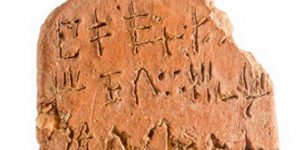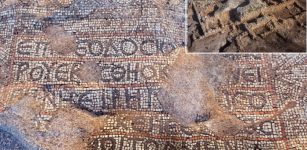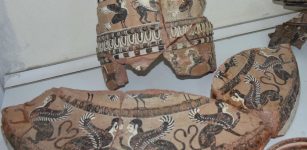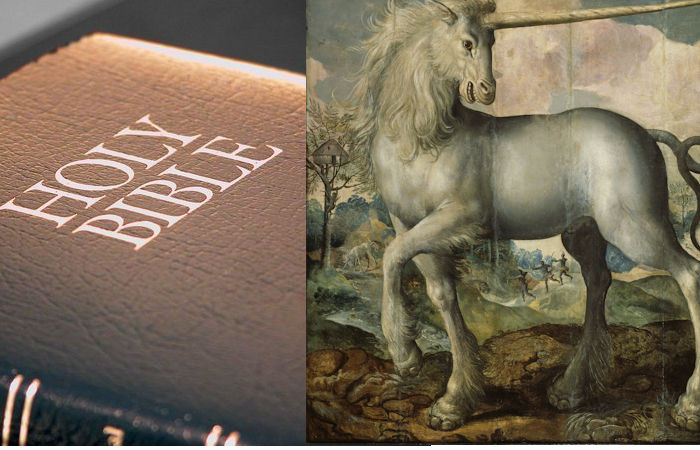The Unicorn In The Bible Was An Oryx – Ancient Translation Mistake
Ellen Lloyd - AncientPages.com - The unicorn is a legendary animal that has fascinated people for ages. Depictions of this magical and beautiful animal have been found on ancient seals, and early Greek writers believed the unicorn originated from India.
During the Middle Ages and Renaissance, people were incredibly interested in this mysterious creature no one had seen. As discussed in our previous article on Ancient Pages, Vikings used the opportunity and started selling faked unicorn horns and fooled Europeans with their bluff for hundreds of years.
Being in possession of a unicorn horn was everyone’s desire, but hardly possible due to the high price. It was believed that the alicorn, the horn itself, and the substance it was made of held magical and medicinal properties. Even the great painter Leonardo da Vinci was fascinated by the unicorn and wrote about it in his notebooks.
The Holy Bible. Credit: Kevin Probst - Public Domain - Unicorn by Maerten de Vos (1532–1603). Credit: Public Domain
Knowledge of the unicorn came from ancient Greek authors and the Bible, but no one knew the magical animal had been misidentified.
The Bible mentions the unicorn seven times, but only by mistake.
The mistake happened long before the birth of Christianity. The Old Testament was originally composed in Hebrew.
In 250 B.C., Ptolemy II Philadelphus, the second King of Egypt's Greek period, ordered 72 elders to translate the sacred Hebrew texts into Greek. That Greek translation is called the Septuagint. During the translation, the Jews encountered a problem. Their texts contained several references to an animal called "Re'em".
Re’em is the Hebrew name for oryx leucoryx or oryx, but the Jewish ancient scholars were confused by the descriptions in the Old Testament.
Left: Virgin Mary holding the unicorn (c. 1480), detail of the Annunciation with the Unicorn Polyptych, National Museum, Warsaw. Credit: Public Domain - Right: Maiden with Unicorn, tapestry, 15th century (Musée de Cluny, Paris). Credit: Public Domain
Modern Bible scholars believe that the Jewish texts are likely to refer to the two-horned oryx. Oryx leucoryx was once a lord of the entire Middle East. Its domain embraced most of the Land of Israel, but during the reign of King Ptolemy II Philadelphus, it had already been extinct in North Africa and the Middle East.
The original Jewish texts mention nothing about the animal having a horn, but the King's scribe chose, despite this, to call the animal monoceros, which can be translated into "a horn". The translation was continued when the Jewish texts became the Old Testament.
Unicorns still captivate modern people, and scientists have tried to find proof of their existence. Some years ago, a unicorn fossil was discovered in Siberia. The discovery caused a sensation. Scientists said unicorns were in fact real, but they looked slightly different from what we imagine today.
Written by Ellen Lloyd – AncientPages.com
Copyright © AncientPages.com All rights reserved. This material may not be published, broadcast, rewritten or redistributed in whole or part without the express written permission of AncientPages.com
More From Ancient Pages
-
 New Clues To Minoan Writing System
Archaeology | Sep 10, 2020
New Clues To Minoan Writing System
Archaeology | Sep 10, 2020 -
 Inghirami Tomb – Spectacular Etruscan Burial With 53 Alabaster Urns In Ancient City Of Volterra, Italy
Featured Stories | Apr 19, 2021
Inghirami Tomb – Spectacular Etruscan Burial With 53 Alabaster Urns In Ancient City Of Volterra, Italy
Featured Stories | Apr 19, 2021 -
 Secrets Of The Uruk Prophecy Found In The Ancient Library Of A Magician With Divine Powers
Featured Stories | Mar 18, 2025
Secrets Of The Uruk Prophecy Found In The Ancient Library Of A Magician With Divine Powers
Featured Stories | Mar 18, 2025 -
 On This Day In History: Siege Of Belgrade – Hungarian Battle Victory – On July 4,1456
News | Jul 4, 2016
On This Day In History: Siege Of Belgrade – Hungarian Battle Victory – On July 4,1456
News | Jul 4, 2016 -
 On This Day In History: Solar Storm Known As The Carrington Event Took Place – On August 28, 1859
News | Aug 28, 2016
On This Day In History: Solar Storm Known As The Carrington Event Took Place – On August 28, 1859
News | Aug 28, 2016 -
 Mysterious Ancient Village In A Prehistoric Anomalous Zone – Dangerous Underground Secret – Part 2
Ancient Mysteries | Jul 28, 2020
Mysterious Ancient Village In A Prehistoric Anomalous Zone – Dangerous Underground Secret – Part 2
Ancient Mysteries | Jul 28, 2020 -
 On This Day In History: Ferdinand Magellan Reached Pacific And South American Strait – On Nov 28, 1520
News | Nov 28, 2016
On This Day In History: Ferdinand Magellan Reached Pacific And South American Strait – On Nov 28, 1520
News | Nov 28, 2016 -
 Mikoshi-Nyudo: Evil, Bald-Headed And Long-Necked Yokai Goblin In Japanese Folklore
Featured Stories | Sep 12, 2024
Mikoshi-Nyudo: Evil, Bald-Headed And Long-Necked Yokai Goblin In Japanese Folklore
Featured Stories | Sep 12, 2024 -
 2700-Year-Old Farmhouse, Byzantine Monastery With Silver Coins And Colorful Mosaics Unearthed In Rosh Ha-‘Ayin, Israel
Archaeology | Dec 31, 2015
2700-Year-Old Farmhouse, Byzantine Monastery With Silver Coins And Colorful Mosaics Unearthed In Rosh Ha-‘Ayin, Israel
Archaeology | Dec 31, 2015 -
 Iktomi – Native American Spider-Trickster Spirit Whose Stories Teach Moral Values
Featured Stories | Jan 28, 2019
Iktomi – Native American Spider-Trickster Spirit Whose Stories Teach Moral Values
Featured Stories | Jan 28, 2019 -
 3D Scans Used To Study Mysterious Roman Burial Practice
Archaeology | Jun 5, 2023
3D Scans Used To Study Mysterious Roman Burial Practice
Archaeology | Jun 5, 2023 -
 Secrets Of The Famous Hellenistic-Era Kyrenia Shipwreck Revealed
Archaeology | Jun 28, 2024
Secrets Of The Famous Hellenistic-Era Kyrenia Shipwreck Revealed
Archaeology | Jun 28, 2024 -
 One Of A Kind 2,500-Year-Old Ritual Wash Basin Painted With Mythological Figures Discovered In The Ancient City Of Klazomenai
Archaeology | Oct 1, 2022
One Of A Kind 2,500-Year-Old Ritual Wash Basin Painted With Mythological Figures Discovered In The Ancient City Of Klazomenai
Archaeology | Oct 1, 2022 -
 Ancient Mystery Of The Before – Time People – Traces Of An Unknown Lost Race – Part 1
Ancient Mysteries | Apr 3, 2019
Ancient Mystery Of The Before – Time People – Traces Of An Unknown Lost Race – Part 1
Ancient Mysteries | Apr 3, 2019 -
 On This Day In History: Hubble Space Telescope Was Launched – On April 24, 1990
News | Apr 24, 2016
On This Day In History: Hubble Space Telescope Was Launched – On April 24, 1990
News | Apr 24, 2016 -
 Book Of Kells: Illuminated Medieval Manuscript From Monastery On Iona, Scotland
Artifacts | Feb 8, 2018
Book Of Kells: Illuminated Medieval Manuscript From Monastery On Iona, Scotland
Artifacts | Feb 8, 2018 -
 On This Day In History: Great Siege of Malta: Ottoman Forces Made Attempt To Conquer Malta And Failed – On May 18, 1565
News | May 18, 2016
On This Day In History: Great Siege of Malta: Ottoman Forces Made Attempt To Conquer Malta And Failed – On May 18, 1565
News | May 18, 2016 -
 Scientific ‘Detective Work’ With South American Mummies Reveals They Were Brutally Murdered
Archaeology | Sep 9, 2022
Scientific ‘Detective Work’ With South American Mummies Reveals They Were Brutally Murdered
Archaeology | Sep 9, 2022 -
 Ravana: Ten-Headed And Multi-Armed Demon King Of Lanka And Chief Antagonist In Epic Ramayana
Featured Stories | Oct 8, 2019
Ravana: Ten-Headed And Multi-Armed Demon King Of Lanka And Chief Antagonist In Epic Ramayana
Featured Stories | Oct 8, 2019 -
 On This Day In History: Earthquake In Pompeii, Italy Occurred – On Feb 5, 62 AD
News | Feb 5, 2017
On This Day In History: Earthquake In Pompeii, Italy Occurred – On Feb 5, 62 AD
News | Feb 5, 2017


